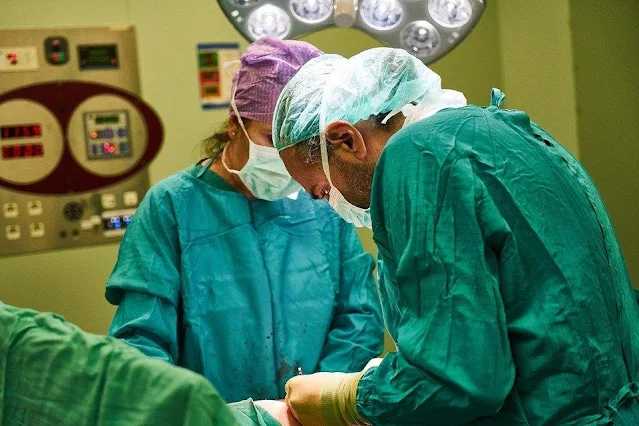Ad Code
Translate
List of 6,000+ Dofollow Commentluv Blogs FREE (Updated 2025)
January 16, 2025
What is Ozempic (semaglutide)? (Updated in 2025)
January 30, 2025
How To Find Suitable Properties In Cyprus? (Updated in 2025)
January 11, 2025
Smart strategies for trading on crypto exchanges
February 18, 2025
Recovering Compensation for the Full Cost of Medical Malpractice
Khabza Mkhize
May 07, 2021

According to a study in the Journal of Patient Safety, it’s estimated that hospital errors are now the third leading cause of death in the United States behind heart disease and cancer, with approximately 440,000 deaths each year.
Medical malpractice refers to negligence caused by the actions or omissions of a healthcare provider. This includes anyone involved in the healthcare industry, such as surgeons, doctors, nurses and hospital staff. There are about 15,000 to 19,000 medical malpractice lawsuits in the USA each year, and the standards and regulations for medical malpractice can differ between states and countries.
If you or a loved one has suffered from harm or injury due to negligence and medical malpractice, you are in a position to pursue the lawsuit. In this article, you’ll be able to find out about the types of medical malpractices, the damages covered, and how to pursue the lawsuit.

Types of Medical Malpractice
Though medical malpractice covers a number of areas, there are a few common types of malpractice errors that can help you determine if you have a case.Misdiagnosis
The leading type of medical malpractice is misdiagnosis. This occurs when a doctor examines a patient, but the doctor is unable to diagnose the illness correctly. Inability or failure to diagnose life-threatening conditions can have devastating consequences leading to serious injury, harm, and in some cases, even death. The most commonly misdiagnosed conditions are heart attack and cancer.
Misdiagnosis prevents patients from seeking the correct treatment, as doctors may diagnose a patient with a condition that they may not have. Misdiagnosis is only considered malpractice if the doctor was unable to do what other doctors would do in a similar situation.
Misdiagnosis prevents patients from seeking the correct treatment, as doctors may diagnose a patient with a condition that they may not have. Misdiagnosis is only considered malpractice if the doctor was unable to do what other doctors would do in a similar situation.
Surgical Errors
Surgical errors are another common medical malpractice. Examples of surgical errors include, but are not limited to:- Damaging other organs or nerves during surgery
- Providing inadequate after-surgery care
- Performing the incorrect procedure
- Using non-sterile surgical equipment
- Leaving surgical instruments or sponges inside the body during surgery

Surgical errors can lead to long-lasting effects on a patient's health and reduce their quality of life. Even though consent forms are signed before the surgery takes place, patients are still allowed to sue for serious surgical errors.
Birth Injury
A considerable portion of medical malpractice claims is taken up against OBGYN's for devastating childbirth-related medical mistakes. In some cases where birth injuries are caused by negligence, patients can pursue a medical malpractice lawsuit. Birth injuries can range from many things and occur in many forms. This includes inadequate prenatal care, negligence during childbirth that led to injury for the baby or the mother, such as nerve damage, spinal cord damage, and more.
Prescription Errors
Prescription errors occur when doctors prescribe the incorrect medication, dosage, or neglect to inform patients of their side effects. This can lead to some severe health problems, causing harm or injury to the patient. The doctor is liable to the patient and must inform them of all the known side effects so that patients can make an informed choice on whether or not they would like to start the drugs or look for alternative treatment.Damages in Medical Malpractice Cases
If a patient succeeds in a claim for medical malpractice, they can receive monetary reimbursement for both economic and non-economic damages. Although several states enforce caps on medical negligence claims, the state of Alabama does not. Make sure to check the details about award limits as well as statute limitations and civil injury laws before proceeding, as there may be a limit on a portion of the award or the whole amount.Economic and Non-Economic Damages
Economic damages are commonly known as special damages and compensate the patient for the monetary costs that they had to endure due to malpractice. These include covering medical expenditures that are associated with prescription and treatment, or any sort of harm or injuries that the medical malpractice resulted in. These may also include the loss of income due to the time that the patient has had to miss at work. Patients may also gather damages for further medical expenses. The claims to these costs are supported through relevant documents such as medical invoices, but sometimes witnesses and experts are needed for a more complex and exhaustive list of reimbursements.Non-economic damages are known as damages and cover a variety of things. This includes the discomfort and distress of the victim, lower quality of life, and if malpractice led to disability, then these also include reimbursement for loss of future earning capability. Witness testimonies from the person who suffered, their companions, and family, and experts are required to help a court understand the gravity of harm medical malpractice has caused the victim.
Punitive Damages
Punitive damages are usually uncommon in medical malpractice lawsuits. The purpose of pursuing punitive damages is to reprimand the medical professional for their inadequate conduct. This sends a message to other medical professionals who are similarly situated. Victims need to be able to prove resolve, carelessness, or another mental state superior to neglect to achieve punitive damages.Wrongful Death
Depending on the nature of the claim, the demise of a patient can lead to two different types of compensations. Wrongful death lawsuits compensate family members monetarily for memorial costs and future financial loss, especially if dependents are involved. Only specific relatives are allowed to claim this, and it can be administered within three years of death or the incident. In some cases, this includes a lifelong partner, grandparents, and more.
The other type of claim is survival action which reimburses the estate of the victim or heirs for the costs of malpractice that resulted in the victim’s death. These cover several damages that would also have been involved in personal injury lawsuits, had the victim survived. The survival action claim covers medical invoices before death, discomfort, and distress experienced by the victim, and the compensation is usually monetary.
Hare | Wynn, Newell & Newton has a team medical malpractice lawyers that can help you pursue your medical malpractice lawsuit. Serving the people since 1890, their clients are their first priority.
Contact them for more info.
Featured Post
12 Prominent new technologies and trends emerging in 2025
Khabza Mkhize-
April 02, 2025
Soapie Teasers
Sister Sites
Most Popular
List of 6,000+ Dofollow Commentluv Blogs FREE (Updated 2025)
January 16, 2025
Smart strategies for trading on crypto exchanges
February 18, 2025
Popular posts
List of 6,000+ Dofollow Commentluv Blogs FREE (Updated 2025)
January 16, 2025
Smart strategies for trading on crypto exchanges
February 18, 2025
Footer Menu Widget
Created By Blogspot Theme | Distributed By Gooyaabi Templates



0 Comments